The Economics and Statistics Division maintains archives of previous publications for accountability purposes, but makes no updates to keep these documents current with the latest data revisions from Statistics Canada. As a result, information in older documents may not be accurate. Please exercise caution when referring to older documents. For the latest information and historical data, please contact the individual listed to the right.
<--- Return to Archive
For additional information relating to this article, please contact:
October 07, 2021POPULATION PROJECTIONS FOR FIRST NATIONS AND INUIT, 2016 TO 2041 Statistics Canada has released population projections of Indigenous populations, including First Nations and Inuit, and households in Canada from 2016 to 2041. Projections are based on data from the 2016 Census, which were adjusted to account for net undercoverage and the population living on incompletely enumerated reserves and settlements. These adjustments result in population projections that could be slightly different from values obtained directly from the 2016 Census.
The First Nations and Inuit populations in Canada are projected to grow faster than the non-Indigenous population, even after accounting for sustained immigration in years to come. Two main factors are driving higher growth in the First Nations and Inuit population: higher fertility rates compared to the non-Indigenous population, and changes in the self-reporting of Indigenous identity over a person’s lifetime.
The First Nations population in Canada is projected to grow from 1.072 million in 2016 (as of the 2016 Census of Population) to 1.459 million under a low growth scenario, to 1.633 million under a medium growth scenario, and to 1.786 million under a high growth scenario. The First Nations population is projected to grow in all provinces and territories from 2016 to 2041. The Inuit population is projected to grow from 67,000 in 2016 to 92,000 under a low growth scenario, to 96,000 under a medium growth scenario, and to 101,000 in a high growth scenario. Most of the Inuit population live in one of the four Inuit Nunangat regions (Nunavut, Nunavik [northern Quebec], the Inuvialuit region of the Northwest Territories, and Nunatsiavut [northern Labrador]).
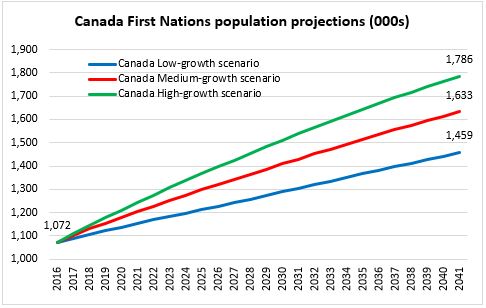
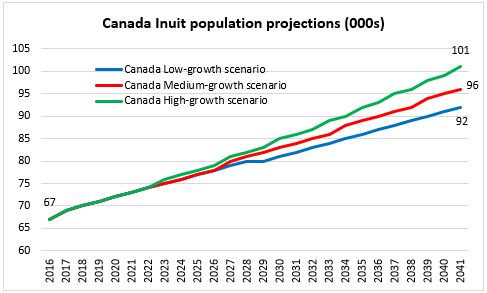
The First Nations population in Nova Scotia is projected to grow from 27,000 in 2016 to 37,000 under a low growth scenario, to 42,000 under a medium growth scenario, and to 47,000 under a high growth scenario.

The First Nations population is projected to remain younger over the projection period compared to the non-First Nations population. However, it is projected to age more quickly as Statistics Canada projections assume that fertility declines from recent averages.
The core-aged (25 to 54) population is projected to reflect similar proportions of the population as non-First Nations population by 2041. The share of First Nations children (0 to 14) and First Nations youth (15 to 24) are projected to decline over time, while these shares decline at a slower pace for the non-First Nations population. The share of people aged 65 and over increases throughout the projection period for both groups, but remains at a lower level for the First Nations population.

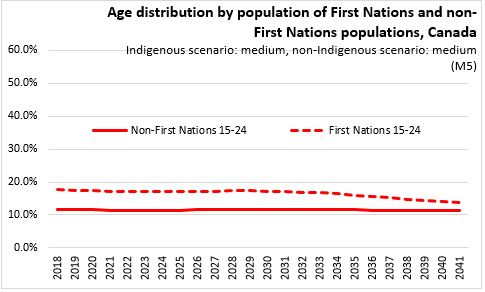

The First Nations population in Nova Scotia is projected to follow similar trends as the First Nations population in Canada over time. At the end of the projection period, the First Nations population in Nova Scotia has a smaller share of children, a higher share of youth and core aged people, and a higher share of those aged 65 and over compared to the Canadian First Nations population.
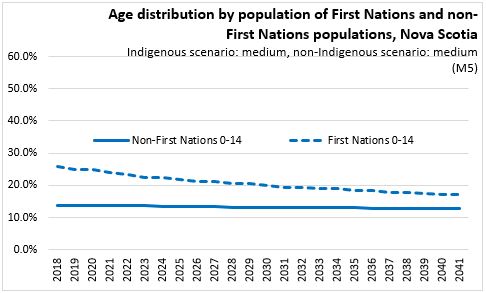
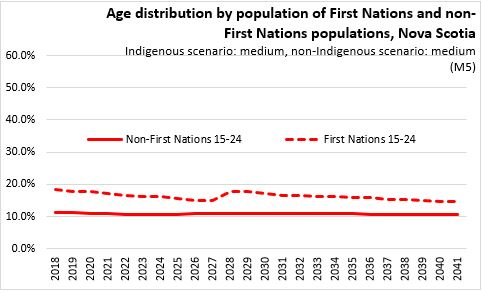
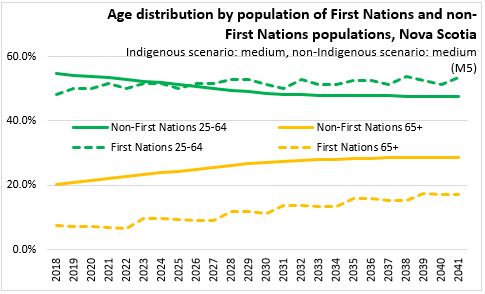
The First Nations population is projected to grow in every province and territory over the projection horizon, with the largest number of First Nations people in Ontario and British Columbia, as was the case at the time of the 2016 Census. The Inuit population is also projected to grow in the four regions of Inuit Nunangat, and this population is projected to remain significantly younger than the non-Indigenous population.
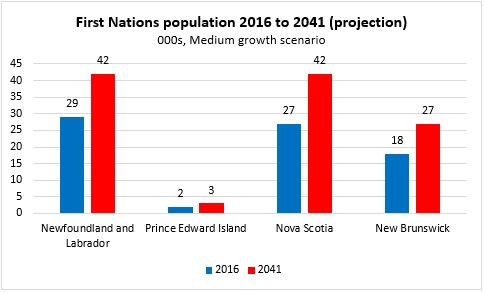
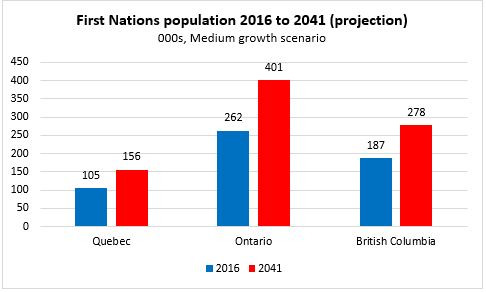


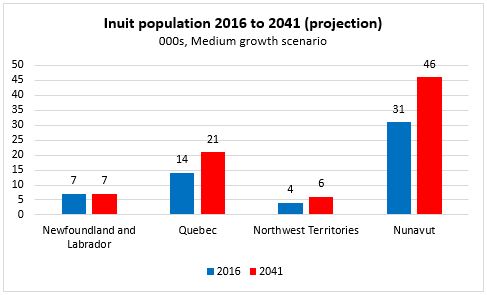
Source: Statistics Canada. Table 17-10-0144-01 Projected population by Indigenous identity, age group, sex, area of residence, provinces and territories, and projection scenario, Canada (x 1,000) ; Table 17-10-0057-01 Projected population, by projection scenario, age and sex, as of July 1 (x 1,000)
<--- Return to Archive